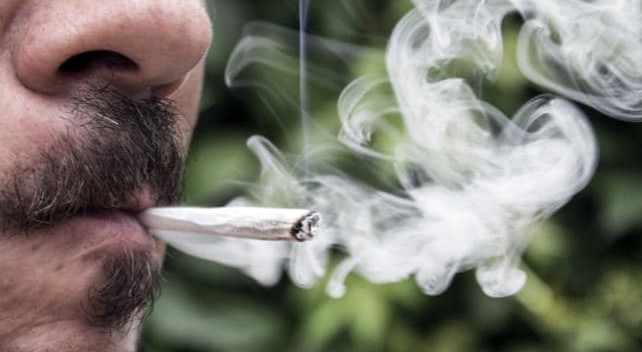“I’ve been using ganja for years and I’m still conscious of people’s perception,” says Beth* during a recent conversation with WeedEd. In between puffs of marijuana at her Kingston office, the attorney and entrepreneur spoke candidly of the stigmatisation associated with ganja and its consumers.
“I feel like the prohibition period has really planted a seed of evil when it comes to ganja, and it may take just as many years to reverse that mindset,” she suggested.
Beth is not alone. WeedEd spoke to five other ganja users over the age of 35 who are all professionals in various industries. They all concurred there is a huge misconception about the type of people that use marijuana and how it impacts the users’ decisions and actions.
“The funny thing is people who do not use marijuana or have never experienced the effect are sometimes the most critical of the plant,” says Andre* a 37-year-old business owner who has been “smoking weed since college”. He pointed out that despite the increased scientific research available on the medicinal benefits of the plant, most persons are still hung up on the image of a “Ras or ghetto youth rubbing out him hand middle” when they hear the word ganja. That image, he said, then becomes the totality of their belief system.
The stigmas are so strong that no one interviewed was comfortable using their real names.
Doctors smoke it
Nurses smoke it
Judges smoke it
Even the lawyer, too
– Peter Tosh,
Legalise It
While ganja was first primarily used among the poorer working class, ganja’s romantic appeal has long transcended race and class boundaries. What didn’t change was the public representation of the people who used it.
However, in the last few years, several global trends have emerged signalling ganja’s future status as a profitable commercial product with a multicultural consumer base.
Right here in Jamaica, the CanEx Jamaica Business Conference and Expo for the past three years has been attracting investors, speakers and entrepreneurs from across the globe looking for opportunities in not just Jamaica but the entire region.
CanEx founder Douglas Gordon says the expo uses education and networking to counter the negative mindset prohibition has instilled.
“Once you’re exposed to the facts and true knowledge of the medicinal value (of ganja) there can be no further stigma,” said Douglas.
“Regardless of what we were taught when we were younger or whatever grounds upon which many of our judgements were constructed, we now have access to proper information and, quite simply, knowledge is power.”
Ganja normalisation is also seen in attractions being offered. Las Vegas, one of the world’s most captivating destinations, is home to the first interactive museum dedicated to all things ganja. The museum highlights include the world’s largest bong at 24ft tall – and fully functional.
The food, beauty and medical industries, and even construction sector through the use of hempcrete, have all slowly re embraced ganja’s potential commercial value.
But when it comes to the recreational adult user, which represents the majority of consumers, they are still faced with disdain from many sectors of society.
The Ministry of Health has stated that its issue is primarily around smoking as a means of consumption, which they deem unhealthy no matter the substance.
Consultant psychiatrist Professor Wendel Abel said it would be irresponsible of the public to socially accept ganja smoking knowing there are health risks involved. He said a balanced perspective must be taken towards the ganja industry and acknowledge that the medicinal values also come with some risks.
Tired fi lick weed in a bush
Tired fi lick chillum in a gully
We want to come out in the open
Where the breeze can blow it so far away.
– Jacob Miller
Tired Fi Lick Weed In A Bush
The effect of ganja smoking on the lungs has been researched and studied with contrasting conclusions. Avid ganja consumers, however, believe the risks are nothing compared to those of socially accepted vices such as tobacco and alcohol. They feel ganja is disproportionately criticised, even though its value far outweighs its risk.
Destigmatise Ganja Use
“I shouldn’t have to hide and lick,” said Ann-Marie*, a 35-year-old mom and project manager, referring to the practice of consuming in privacy for fear of judgement.
“Smoking ganja doesn’t stop me from being a great mother, or good at my job, or handling my adult responsibilities. In some instances, it enhances those said things.”
In the United States and Canada, more professionals have been coming out in support of ganja destigmatisation by speaking openly about their use and forming coalitions that they believe best represent them. From Pot Parents to Moms for Marijuana International, these groups are aiming to bring a new perspective of what the modern ganja consumer looks and sounds like.
More current research is also available that challenges the association of “worthlessness” with ganja consumption. A 2017 survey among 1600 North Americans exploring modern ganja culture was conducted by digital media outlet, Civilised (www.civilized.life) and PSB Research Agency. The findings interestingly revealed that Ganja users are more educated than non-users, have a better social life and are more physically active than non-users.
“The notion of ganja users being unproductive and unambitious, and that it’s a gateway drug has long been debunked,” says Blaine Dowdle, a ganja consumer for 25 years and the CEO of Itopia Life, a Jamaican ganja company. Dowdle is a Canadian who started his first cannabis dispensary, Human, in 2003 in Toronto. He said he challenged public perception of ganja by appearing at places you’d least expect to find a ganja company.
“We went to traditional trade shows – home and beauty shows – and when we popped up at these locations persons were very surprised but it provided the right opportunity to engage them in a meaningful way,” said Dowdle.
He soon found out that ‘Joe public’ was only his first obstacle. When persons returned home from the trade shows after learning of the wonders of ganja, their doctors refused to recommend it for medicinal purposes.
The solution?
Dowdle targeted Canada’s two biggest medical trade shows and used the same strategy as the pharmaceutical companies to recruit doctors who would promote their product.
“This allowed us to sell the concept directly to doctors and that worked really well in destigmatising cannabis,” he said.
Stories like Dowdle’s proved to be important building blocks over the 17-year period Canada went from prohibition to full legalisation. Today, Canada is home to the most ganja companies and on October 17 was the first developed nation to fully legalise ganja. The Government is betting that this move will not only normalise the plant and protect minors, but position Canada for economic success.
At just three years old, Jamaica’s ganja industry is heading in the right direction. There are at least 35 countries that have legalised medical ganja, and at least US$3 billion in marijuana investments this year.
Ganja may never shake the stigma, but its revolution is real and present.
Credit: jamaica-gleaner.com



